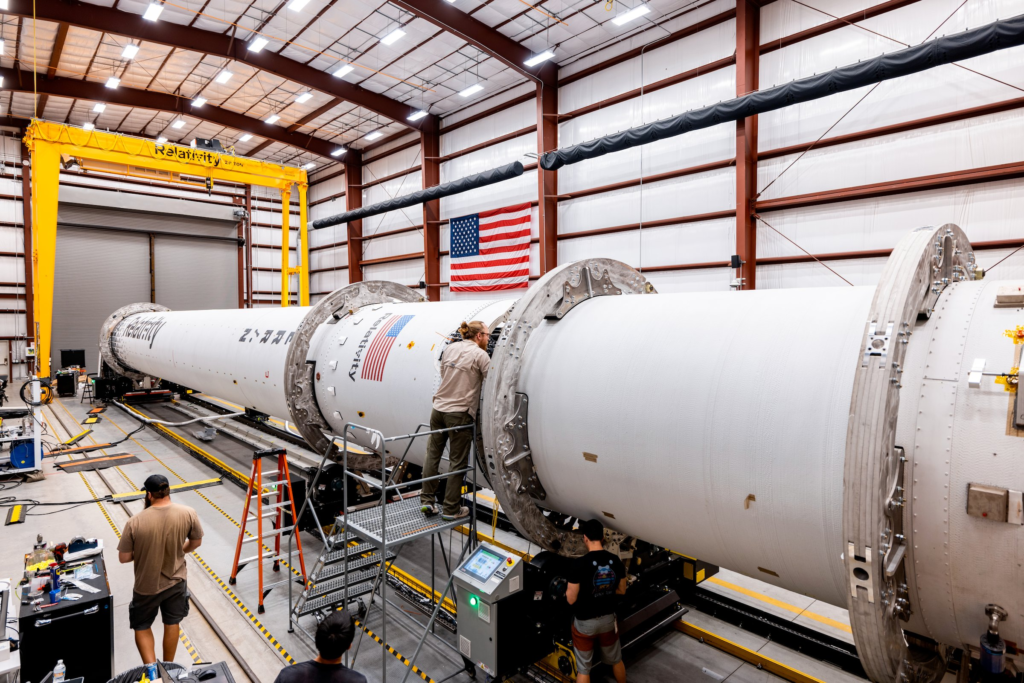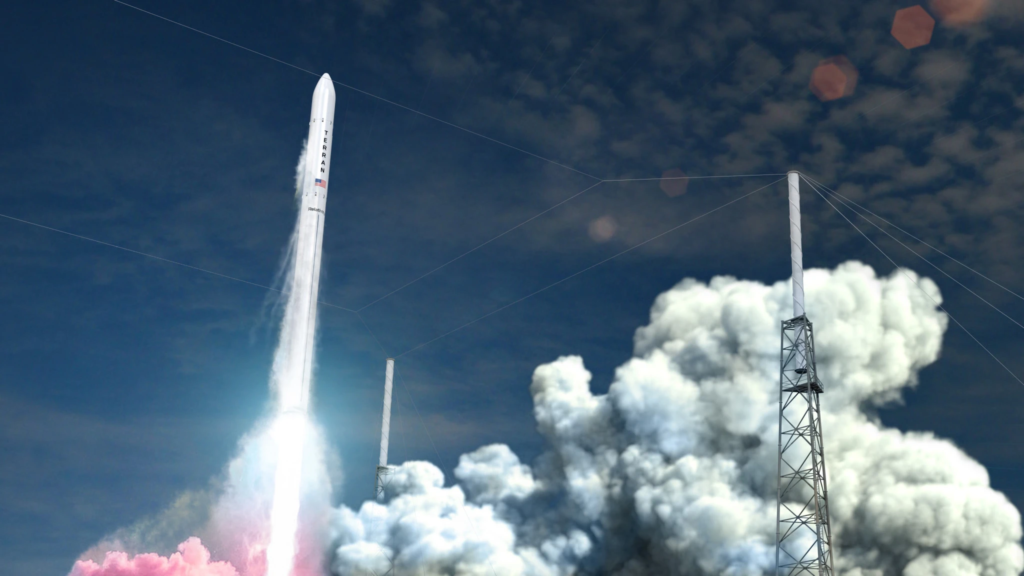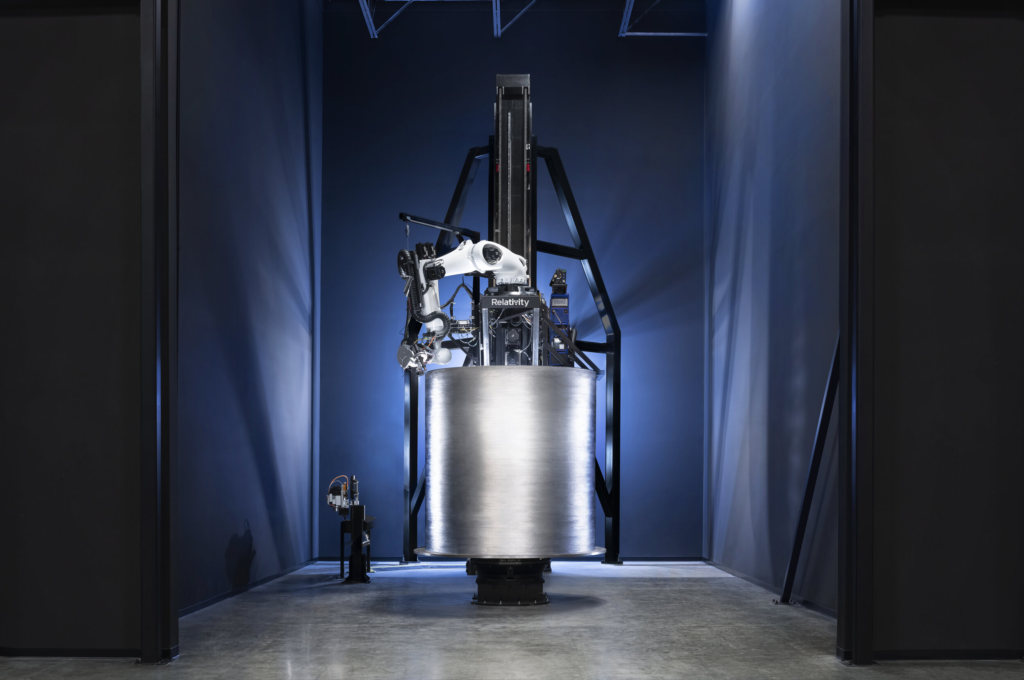
Relativity Space’s Terran 1 Could Launch Next Month In December
Relativity Space is closer than ever to its first launch of Terran 1. This first test article expected to take flight is 85% 3D printed by mass, and also utilizes liquid oxygen and liquid natural gas as propellants. These two features among others make it stand out within the space industry as a very unique launch vehicle with a lot of potential.
Based on recent updates from Relativity Space along with the company’s current estimate for the rocket’s first launch, it’s possible next month in December we watch history be made. This being said, rocket launches are immensely complex processes that are by no means easy. Not to mention the fact that the maiden flight of many different rockets is often explosive.
However, Relativity is confident in its design and is continuing to try and make improvements to both Terran 1 and the 3D printing process. This involves even more work on the next generation 3D printers for Terran R. Here I will go more in-depth into the recent updates on Terran 1, when we can expect to see this rocket launch, improvements with 3D printing, and more.
Terran 1 Launch Date

The last couple of weeks alone has been filled with updates on Terran 1 from Relativity Space. Starting November 9th the company tweeted saying, “Peek inside Terran 1 LC-16 ops. Stage 1 TVC polarity testing complete.” This included a close up of the Terran 1 flight vehicle moving 8 of the outer Aeon engines on the bottom of the first stage. They clarified with another tweet soon after mentioning, “TVC = Thrust Vector Control is the ability of an aircraft, in our case a rocket, to manipulate the direction of the thrust from its engine(s) to control the attitude or angular velocity of the vehicle.”
Next on the 18th, Relativity tweeted pointing out, “Terran 1’s stage mate ops are complete.” This included images of both the mated rocket and even the upper stage Aeon Vac right before the stages came together.
All of which leads up to the expected launch date for this first Terran 1 test article. Relativity is scheduled for this first mission, called “GLHF” (Good Luck, Have Fun), from Launch Complex 16 (LC-16) in Cape Canaveral in 2022. Being that it’s already almost the end of November, it’s possible that next month in late December, we see Terran 1 lift off. However, while the latest updates are good signs of progress, in reality, being that it’s the company’s first launch, it will likely be pushed back a bit further. A more conservative estimate would be early 2023 for this launch. What was originally scheduled to happen this summer just months ago, has taken a bit longer than expected.
In terms of the mission, this launch of Terran 1 is the first orbital attempt by Relativity and will not include a customer payload. As a two-stage, 110ft. tall, 7.5 ft. wide, expendable rocket, Terran 1 is the largest 3D printed object to exist and to attempt orbital flight. Working towards its goal of being 95% 3D printed, Relativity’s first Terran 1 vehicle is 85% 3D printed by mass. Terran 1 has nine Aeon engines on its first stage, and one Aeon Vac on its second stage. Like its structure, all Relativity engines are entirely 3D printed, and use liquid oxygen (LOX) and liquid natural gas (LNG), which are not only the best for rocket propulsion, but also for reusability, and the easiest to eventually transition to methane on Mars. As one of the few LOX/LNG fueled rockets in the industry, Terran 1 is racing to be the first LOX/LNG rocket to fly.
The company’s engines, Aeon 1, Aeon R, and Aeon Vac, are 3D-printed, and expected to enhance mission reliability by reducing part count in engine combustion chambers, igniters, turbopumps, reaction control thrusters, and vehicle pressurization systems. In addition, Relativity points out that the propellants these engines use are not only one of the best for rocket propulsion, but also the easiest to eventually make on Mars. To date, Aeon has completed 500+ test fires.
3D Printing Overview

Now that we know more about Terran 1’s progress and its upcoming test flight, we can take a closer look at why this mission is such a big deal and how Relativity is trying to change the rocket manufacturing process. Relativity calls this system and place the Factory of the Future, which centers on Stargate, the world’s largest metal 3D printers, that create Terran 1, the world’s first 3D printed rocket, and the first fully reusable, entirely 3D printed rocket, Terran R, from raw material to flight in 60 days. Relativity’s Stargate printers’ patented technology enables an entirely new value chain and innovative structural designs that make Terran 1 and Terran R possible. By developing its Factory of the Future and rockets together, Relativity is trying to accelerate its ability to improve design, production, quality, and speed.
Just last month the company revealed a big update regarding this process with a new generation of 3D printers. Specifically, on October 24th, Relativity unveiled the latest iteration of its first-of-its-kind proprietary manufacturing platform, Stargate 4th Generation metal 3D printers. These printers are expected to underpin both the development and rate production of Terran R, Relativity’s fully reusable, 3D printed rocket that will be capable of launching 20,000 kg to low Earth orbit (LEO). The newest Stargate printer technology defies traditional printing constraints by moving horizontally as it feeds multiple wires into a single print head to print orbital rockets. Relativity is developing customized software and machine learning techniques to allow these printers to print more complex and significantly larger metal products, with improved print speed and reliability. The new generation of printers also radically simplifies manufacturing supply chains, as they are capable of printing a rocket with 100x fewer parts in a matter of months.
With faster iteration cycles, Stargate printers are capable of accelerating progress and innovation within the aerospace industry. Most immediately, these printers will serve as the primary manufacturing infrastructure for Terran R production. Longer-term, Relativity believes these new printers offer tremendous value-generating potential for other end-product use cases within the $1T+ aerospace, aviation, energy, and defense industries as the core of a new tech stack for aerospace products. To date, Relativity has secured five customers across $1.2B+ in customer contracts for Terran R, including a multi-launch agreement with OneWeb and a commercial mission to Mars with Impulse Space. Just yesterday they provided an update with a tweet saying, “Currently, at The Wormhole, our Long Beach HQ, a star is at work. Stargate 4th Generation printers.” As Relativity continues to make progress on this system, the more realistic some of the company’s very ambitious plans become.
Focusing back on the first launch of Terran 1, as partially mentioned prior, this launch is set to happen from Launch Complex 16 in Cape Canaveral Florida. Years ago in early 2019, Relativity was granted a Right of Entry for its own rocket launch facilities at Launch Complex 16 (LC-16) at Cape Canaveral Air Force Station in Florida by The 45th Space Wing of the United States Air Force. The Right of Entry signified the U.S. Air Force’s formal acceptance of Relativity to build and conduct launch operations from Cape Canaveral Air Force Station. This is the first and only direct agreement the U.S. Air Force has completed with a venture-backed orbital launch company at LC-16, and includes on-site vehicle integration and payload processing, with the opportunity to extend to an exclusive 20-year term. Relativity joined SpaceX, ULA, and Blue Origin as only the 4th company with a major operational orbital launch site at Cape Canaveral.
The LC-16 launch facility was historically used for Titan missile launches, the Apollo moon program, the Gemini program, and Pershing missile launches. Launch infrastructure is in limited supply, and LC-16 is one of the few major launch facilities still available at Cape Canaveral. LC-16 is capable of supporting Relativity’s rocket, Terran 1, the first and only fully 3D printed rocket in the world, as well as the company’s future expansions in payload capacity, and comes with substantial existing infrastructure and operational history. Additionally, at the time, Relativity hired a team made up of former senior leadership personnel from top space companies, who have executed over 158 successful launches at Cape Canaveral. Since then, we have seen a lot of work at the site to make it compatible with Terran 1. When Relativity got access to the site, CEO Tim Ellis commented, “We are honored to win this significant support from the U.S. Air Force and join a select group of private space companies in conducting launches at Cape Canaveral. Having the rare path toward an exclusive-use agreement at LC-16 ensures our satellite customers will have access to far more schedule certainty, and enables us to execute more frequent launches.”
Conclusion
Relativity Space will soon attempt to launch Terran 1 for the first time. Based on recent updates on the test vehicle along with Relativity’s 2022 launch time frame, it’s possible that next month in December we see Terran 1 lift off. We will have to wait and see how it progresses and the impact it has on the space industry.
